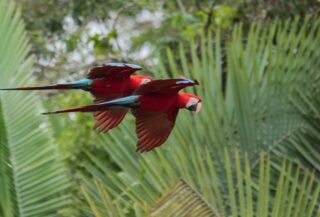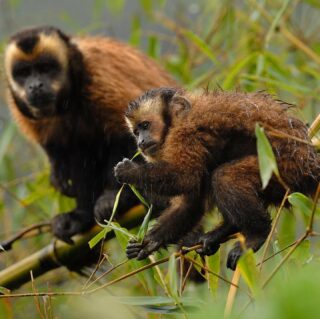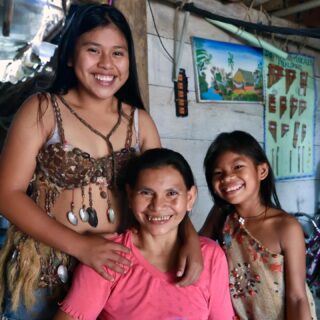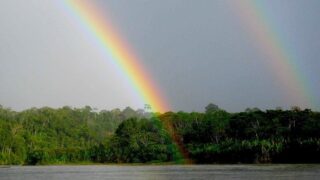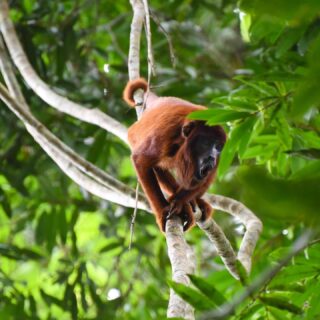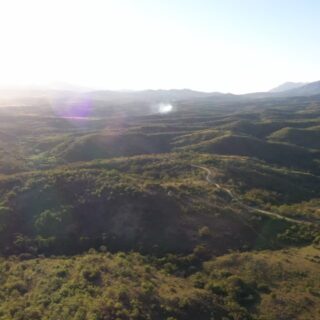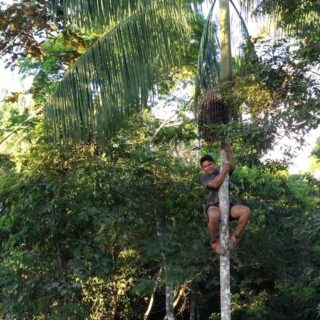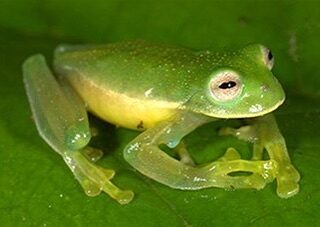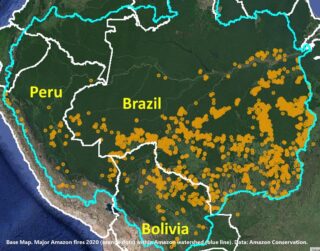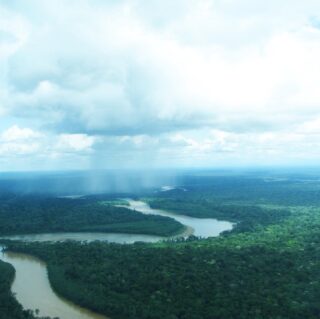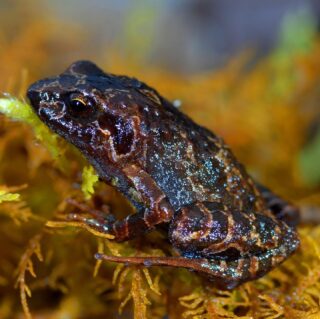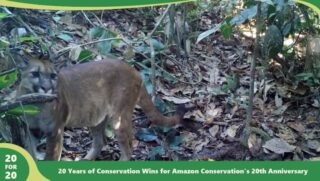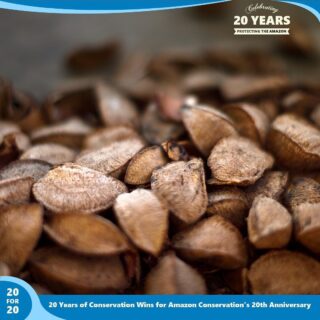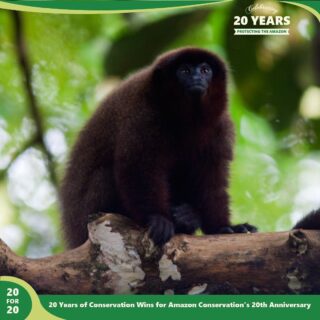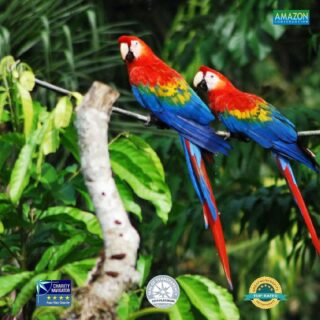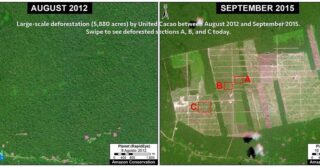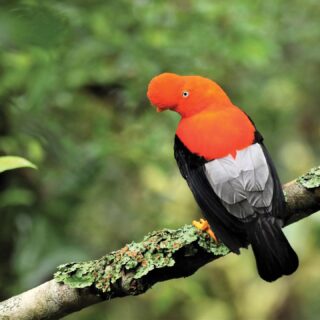 From August 11th through 22nd, the Amazon Conservation Association (ACA) is hosting its first Birdathon in celebration of the immense diversity of bird species in southeastern Peru. ACA’s Birdathon is an event in which a group of conservationist birders will travel a route from the highlands to the lowlands alongside Manu National Park while counting the number of bird species they see. Their goal is to support conservation of southeastern Peru’s globally important forests and the birds dependent on them by seeking sponsors to pledge an amount per bird seen or to make a donation to the event. All funds raised go to ACA to further ongoing conservation efforts.
From August 11th through 22nd, the Amazon Conservation Association (ACA) is hosting its first Birdathon in celebration of the immense diversity of bird species in southeastern Peru. ACA’s Birdathon is an event in which a group of conservationist birders will travel a route from the highlands to the lowlands alongside Manu National Park while counting the number of bird species they see. Their goal is to support conservation of southeastern Peru’s globally important forests and the birds dependent on them by seeking sponsors to pledge an amount per bird seen or to make a donation to the event. All funds raised go to ACA to further ongoing conservation efforts.
The intrepid birders will be stopping at ACA’s Wayqecha Cloud Forest Biological Station and Hacienda Villa Carmen, ACA’s new conservation property which was purchased with the help of the American Bird Conservancy to be protected as a refuge for countless rare and endangered birds. This area, where the eastern slopes of the Andes meet the Amazonian lowlands, boasts an exceptional array of habitats sustaining a vast number of bird species. Along the way the group may see species such as the Giant Hummingbird (“the Schwarzenegger of hummingbirds”), the Cock-of-the-rock, the Gray-breasted Mountain Toucan, or the Undulated Tinamou – but how many will they see in all? It’s the question we all want answered!
Life-long conservationist and avid birder Craig Thompson will lead the Birdathon, traveling from La Crosse, Wisconsin to the Amazon rainforests of Peru along with 12 other participants. The coordinator of the international program of the Wisconsin Bird Conservation Initiative, he has been organizing and leading birding trips to the neotropics for the past 20 years. Like the birds they study, Thompson and participants will migrate down to bird wintering grounds in Peru. The connection between the neotropics and Wisconsin is a strong one – over half of Wisconsin’s 238 species of breeding birds winter within the tropical latitudes.
The Wisconsin birders have set a $20,000 goal for the Birdathon. They are currently more than halfway there – you can help them meet their goal by making a tax-deductible pledge of either a fixed or per-species amount. Your donation will be used by ACA to help protect one of the most biodiverse regions in the world. Just go to ACA’s website to make a one-time donation in support of the event, or fill out our pledge form. Plus, if you guess the final bird count you will win a copy of Birds of Peru from the Princeton Field Guides Series. You can get an idea of the diversity of beautiful birds that the group may see in this video of birds in our Wayqecha Biological Station.


 As illegal gold miners flock to the southeastern Peruvian region of Madre de Dios, an
As illegal gold miners flock to the southeastern Peruvian region of Madre de Dios, an  small-scale gold mining. These miners use mercury to amalgamate gold. By discarding polluted tailings and burning mercury off the gold amalgam, miners release an estimated 30 to 40 tons of mercury annually into the environment in Madre de Dios alone. Miners work without safety measures or even rudimentary equipment to prevent or reduce mercury pollution. Their negligence threatens the health and livelihoods of their families and friends and contaminates the fragile ecosystems through burning of mercury and improper disposal of the toxic chemical.
small-scale gold mining. These miners use mercury to amalgamate gold. By discarding polluted tailings and burning mercury off the gold amalgam, miners release an estimated 30 to 40 tons of mercury annually into the environment in Madre de Dios alone. Miners work without safety measures or even rudimentary equipment to prevent or reduce mercury pollution. Their negligence threatens the health and livelihoods of their families and friends and contaminates the fragile ecosystems through burning of mercury and improper disposal of the toxic chemical. With the start of the new year, it brings us great pleasure to introduce Luis Felipe Duchicela, the new executive director for Amazon Conservation Association/Asociaci
With the start of the new year, it brings us great pleasure to introduce Luis Felipe Duchicela, the new executive director for Amazon Conservation Association/Asociaci Cesar Moran
Cesar Moran CICRA intern Sarah Federman relates her experience working at the Los Amigos Biological Station.
CICRA intern Sarah Federman relates her experience working at the Los Amigos Biological Station. It would be easy to condemn one of these “ideals,” especially when presented with a literal divide at one point during the ride: a conservation concession beyond the bank of the river, with mining on the water. I wonder, though, if there is something more, some entanglement of these two seemingly irreconcilable experiences of the environment. It is this itching question, regarding the contents of the space of friction between two traditionally opposed realities which drives me to study not just ecology, but take a more interdisciplinary route of study.
It would be easy to condemn one of these “ideals,” especially when presented with a literal divide at one point during the ride: a conservation concession beyond the bank of the river, with mining on the water. I wonder, though, if there is something more, some entanglement of these two seemingly irreconcilable experiences of the environment. It is this itching question, regarding the contents of the space of friction between two traditionally opposed realities which drives me to study not just ecology, but take a more interdisciplinary route of study. One of the best perks of the job is that I get to organize and teach sábados científicos (Science Saturdays) at the closest town along the river. I was able to coordinate with the town’s teacher to create a year’s worth of lesson plans to complement the students’ scientific curriculum. The children are quite young, so sábado científico classes have a strong emphasis on combining group work, play, and knowledge of local biodiversity and ecosystems with the aim of promoting a sense of communal pride and protectiveness over local flora and fauna. Students often work in teams to solve questions, find and identify useful plants, or act out parts of an ecosystem; in this way we create a positive association between learning, play, and the amazing natural world in which we live.
One of the best perks of the job is that I get to organize and teach sábados científicos (Science Saturdays) at the closest town along the river. I was able to coordinate with the town’s teacher to create a year’s worth of lesson plans to complement the students’ scientific curriculum. The children are quite young, so sábado científico classes have a strong emphasis on combining group work, play, and knowledge of local biodiversity and ecosystems with the aim of promoting a sense of communal pride and protectiveness over local flora and fauna. Students often work in teams to solve questions, find and identify useful plants, or act out parts of an ecosystem; in this way we create a positive association between learning, play, and the amazing natural world in which we live. Back in February 2010, the government of Peru issued an emergency decree to impose stricter environmental regulations on gold mining. The decree put a hold on approval of new mining claims in Madre de Dios, added controls over where mining is permitted, and prohibited river dredging. The Mining Federation of Madre de Dios (FEDEMIN), afraid the new regulations would cause informal miners to lose their livelihood, called for a strike beginning on April 4. Before the resolution of the four-day strike, violence broke out at a roadblock in northern Peru, resulting in six deaths. (Photo by Walter Wust)
Back in February 2010, the government of Peru issued an emergency decree to impose stricter environmental regulations on gold mining. The decree put a hold on approval of new mining claims in Madre de Dios, added controls over where mining is permitted, and prohibited river dredging. The Mining Federation of Madre de Dios (FEDEMIN), afraid the new regulations would cause informal miners to lose their livelihood, called for a strike beginning on April 4. Before the resolution of the four-day strike, violence broke out at a roadblock in northern Peru, resulting in six deaths. (Photo by Walter Wust) Through this process, large amounts of mercury run into the rivers – polluting fish which are a major protein source in the Amazon – and are absorbed by the soil. Once extracted, the amalgam is burned, releasing the mercury into the air and leaving behind pure gold and a high level of air pollution. In addition to mercury pollution, mining damages riverbanks, contributes to deforestation and, in the case of dredging, destroys riverbeds and silts in the waterways. Some illegal mining operations are carried out within protected-area buffer zones and concessions dedicated to ecotourism.
Through this process, large amounts of mercury run into the rivers – polluting fish which are a major protein source in the Amazon – and are absorbed by the soil. Once extracted, the amalgam is burned, releasing the mercury into the air and leaving behind pure gold and a high level of air pollution. In addition to mercury pollution, mining damages riverbanks, contributes to deforestation and, in the case of dredging, destroys riverbeds and silts in the waterways. Some illegal mining operations are carried out within protected-area buffer zones and concessions dedicated to ecotourism. ACA’s hosting of NPR journalists in the summer of 2009 resulted in an award-winning multimedia package.
ACA’s hosting of NPR journalists in the summer of 2009 resulted in an award-winning multimedia package. The group witnessed miles of deforestation, but they also visited one of the few glimpses of hope in the Amazon basin – ACA’s
The group witnessed miles of deforestation, but they also visited one of the few glimpses of hope in the Amazon basin – ACA’s  November–January, Wayqecha is a magnificent wonder of flowering plants, curious animals, and diverse birds seldom seen at other times of year. Story by Wayqecha intern Laura Morales.
November–January, Wayqecha is a magnificent wonder of flowering plants, curious animals, and diverse birds seldom seen at other times of year. Story by Wayqecha intern Laura Morales.
 full of bristles as to strike fear into the heart of the most experienced biologist lest he put his hand on one accidentally. And of course the myriad orchids in Wayqecha begin to bloom more abundantly at this time of year.
full of bristles as to strike fear into the heart of the most experienced biologist lest he put his hand on one accidentally. And of course the myriad orchids in Wayqecha begin to bloom more abundantly at this time of year. During field trips earlier this year to the community of Toromonas, in northwestern Bolivia, ACA-Bolivia team members came across four species that had never previously been registered in that location. These species include the lesser sac-winged bat (Saccopteryx leptura), and several birds: the black manakin (Xenopipo atronitens), Snethlage’s tody-tyrant (Hemitriccus minor), the brownish twistwing (Cnipodectes subbrunneus), Thamnophilus stictocephala, and Heterocercus linteatu.
During field trips earlier this year to the community of Toromonas, in northwestern Bolivia, ACA-Bolivia team members came across four species that had never previously been registered in that location. These species include the lesser sac-winged bat (Saccopteryx leptura), and several birds: the black manakin (Xenopipo atronitens), Snethlage’s tody-tyrant (Hemitriccus minor), the brownish twistwing (Cnipodectes subbrunneus), Thamnophilus stictocephala, and Heterocercus linteatu. and clearly understudied Pampas del Heath savannas just north of Madidi National Park. ACA staff have created monitoring protocols for hunting and fishing in order to develop management plans for local biodiversity conservation in these communities. By learning how to measure the impact of their own hunting and fishing activities and role of local wildlife, the community members are establishing sustainable hunting and fishing practices for the future. (Photos by Omar Martinez)
and clearly understudied Pampas del Heath savannas just north of Madidi National Park. ACA staff have created monitoring protocols for hunting and fishing in order to develop management plans for local biodiversity conservation in these communities. By learning how to measure the impact of their own hunting and fishing activities and role of local wildlife, the community members are establishing sustainable hunting and fishing practices for the future. (Photos by Omar Martinez)